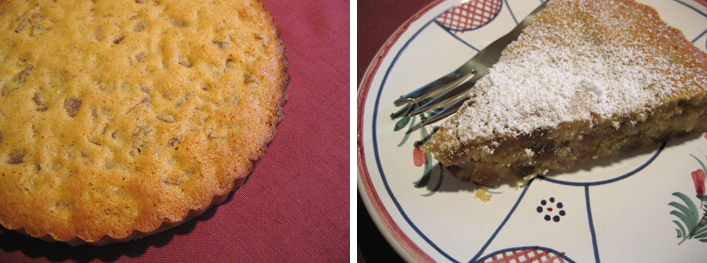Share This
In the new cookbook Ancient Grains for Modern Meals author Maria Speck shares her enchantment with whole grains, and with good food in general. How could I not be drawn to a book whose introduction is titled “The glamour of whole grains”? It just was not possible. Here’s some of the first paragraph:
I crave the tender chewiness of brown rice, the soft, translucent pearls of quinoa, and the warming lightness of millet. I love the subtle sweetnes of whole oats, the slight sourness of rye, and the pleasing nuttiness of wheat berries. But I don’t eat whole grains because they are healthy or wholesome, or to reap their nutritional benefits. To me, whole grains carry luxurious qualities: lively textures, vivid colors, and rich flavors.
Maria Speck’s childhood included time in her father’s native Germany and her mother’s Greek homeland, in an era (not so long ago!) when traditional whole grains were still enjoyed in both places. Like too many of us, she moved away from whole grains as a busy adult, eating packaged foods and gaining a few inevitable pounds every year.
Then, spurred on by a neighbor who was both an excellent cook and a generous soul who shared her bounty, Maria rediscovered whole grains and developed a love of cooking. She credits whole grains and cooking with an effortless weight loss, and a whole new relationship to food.
“Cooking made me appreciate food,” she writes. “It made me slow down and enjoy. Today we call this “mindful eating.” I believe this happens naturally – when you cook.”
When you open a box or nuke a bag in the microwave, sure it’s convenient and quick, but there’s no tie to the food. If you’ve spent even a little time chopping and mixing, and savoring the aromas as a dish slow-cooks on the stove, you’ll be invested in the food. The effort that went into putting the meal on the table will encourage a more drawn-out appreciation of the finished result.
Maria calls this eating philosophy (as it applies to her life) “the truffle theory.” She used to buy store-bought chocolate truffles and find herself unable to resist eating the whole box at a go. Now she makes her own, and finds that one or two of the rich morsels is totally satisfying. Sort of the opposite of “easy come, easy go.”
Her four principles of eating well are:
• cook as often as you can
• eat everything, with pleasure and not in a rush
• buy whole ingredients, close to home
• strive for imperfection; no need to be a four-star chef.
With that solid philosophical foundation, Maria launches into a truly extraordinary whole grains cookbook and invites all of us to catch her contagious spirit. (Want to hear more of Maria’s philosophy? Check out our Q&A with her on The Oldways Table, our sister blog.)
Sure you’ll learn the basics of whole grain cooking – cooked grains keep five days in the fridge or three months in the freezer, for best plumpness and flavor steam grains 10-15 minutes at the end of cooking – and a bit about the flavor and texture characteristics of each different grain.
More than that, however, you’ll be inspired by a range of creative and alluring dishes that bring out the best of the Mediterranean Diet along with the solid Northern European tradition of hearty whole grains. I made the Lemon-Scented Olive Oil Cake with Plumped Figs this weekend (pictured above, just as it came out of the oven and when it hit our table), and my husband, flipping through the pages, requested the Dark Chocolate Truffle Tart with Walnuts for his upcoming birthday.
I can’t wait to try dozens of other recipes, from the Leek Salad with Grilled Haloumi Cheese and Rye Berries pictured on the book’s cover (I adore haloumi) to the Lamb Stew with Wheat Berries in Red Wine Sauce. I’m especially intrigued by Maria’s method of raising yeast bread by plunking it in a stockpot full of cold water – a quick and (according to the author) foolproof method she gleaned from a German magazine article on “Happy Bucket Bread.”
Ancient Grains for Modern Meals isn’t all about whole grains, though. It’s a great introduction to many ingredient tips and small recipes that will turn anyone into a more adventurous and confident cook. The pages are studded with blue boxes on topics like:
* how to toast nuts
* zesting citrus
• mixing your own chocolate hazelnut butter (think Nutella)
* making herbed feta in olive oile
If you’re at all interested in whole grains (and we bet you are, if you’re reading our blog!) you will definitely enjoy Ancient Grains for Modern Meals. In fact, we think so highly of Maria’s work that we’ve appointed her a Culinary Advisor to the Whole Grains Council. We look forward to partnering with Maria to help all Friends of Whole Grains learn more about “the glamour of whole grains.” (Cindy)


Add a Comment